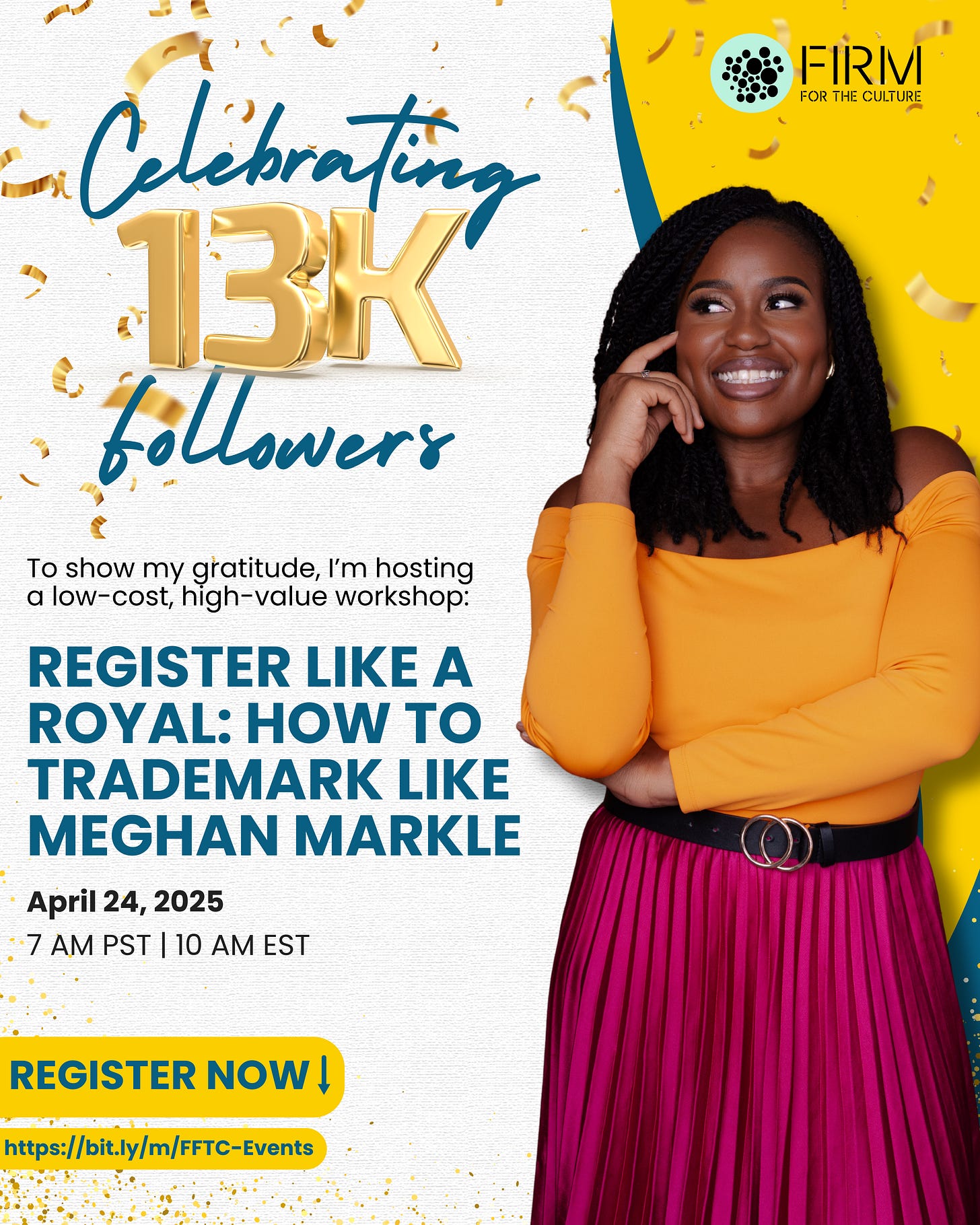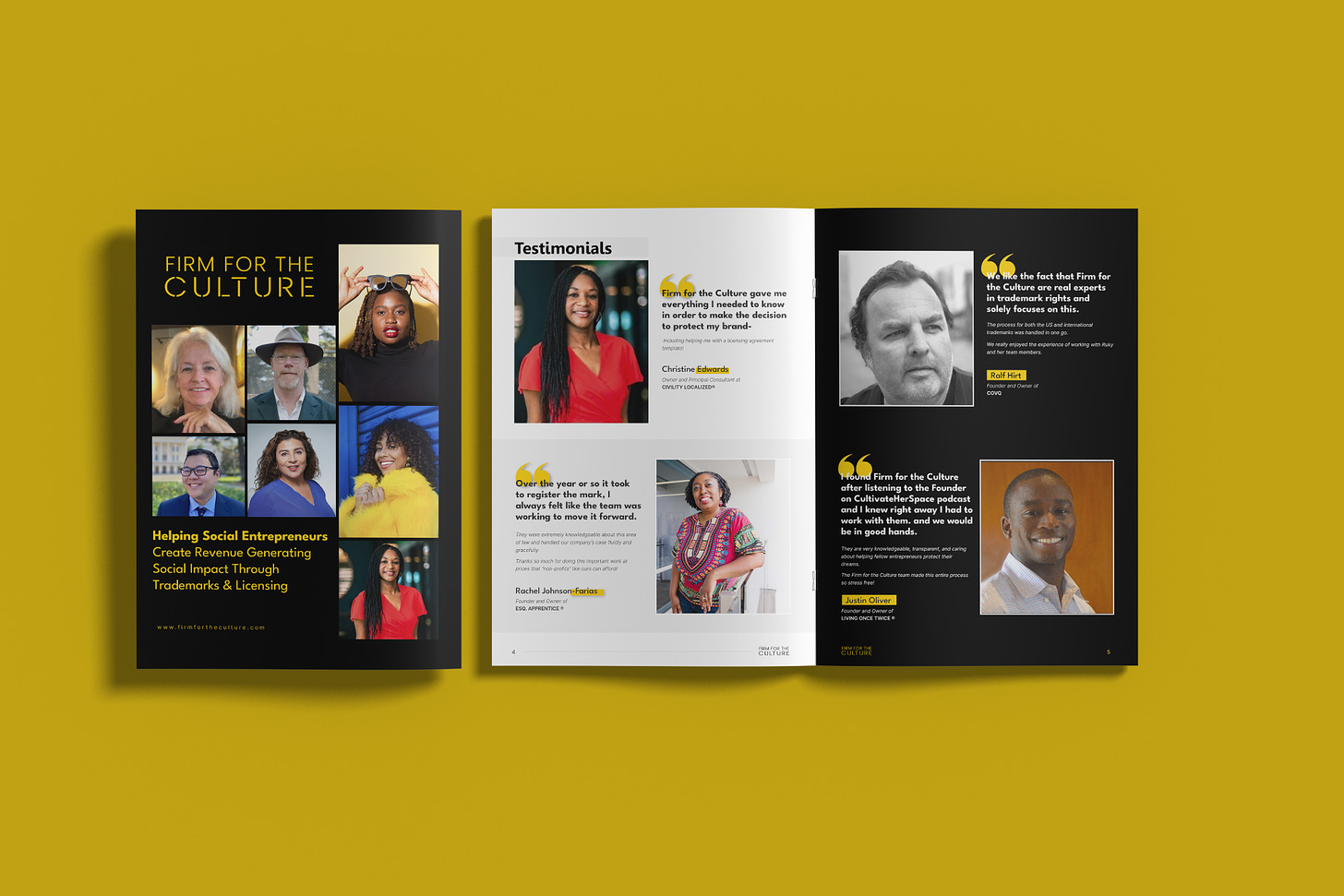Copyright as Cultural Resistance
How Intellectual Property Can Help Prevent Cultural Erasure | I Am What an Intellectual Property Attorney Looks Like.
Hey Fam,
It’s always great to connect with you.
Just recently, the Department of Defense quietly removed the record of Jackie Robinson’s military service from its website.
No explanation. No announcement. Just a missing chapter in the story of a man who changed the course of American history—first, by serving his country, and later, by breaking baseball’s color barrier in 1947.
This moment—deeply symbolic, deeply painful—reminds us that erasure doesn’t always come in the form of violence. Sometimes, it comes in silence. In deletion. In the rewriting of public memory.
As an intellectual property attorney for the Culture, I could not help but think about ways that in this context, intellectual property law—particularly copyright—matters more than we think.
This is especially true for BIPOC creators, whose stories, rituals, designs, and wisdom have long been borrowed, repurposed, or outright stolen, copyright can serve as a form of resistance.
It can offer not only legal protection but also cultural preservation.
Loving This Post?
Show us some love by adding a “❤️” or commenting below; this will make our hearts sing.
But First, Church Announcements
NEW UPCOMING EVENT: I’m excited to invite you to our low-cost, high-value workshop.
Upcoming Event: Register Like a Royal: How to Trademark Like Meghan Markle
In this session, we'll dive into how to protect your brand, secure trademarks, and create a foundation for growth—just like a royal.This is your opportunity to take the next step in your entrepreneurial journey and own your success.
The zoom event is set for Thursday, April 24, 2025 | 7 AM PST | 10 AM EST
We can’t wait to see you there! It’s time to claim your throne in the business world and protect your legacy like the royalty you are.
If you can't make it, don't worry. Everyone who registers will get the notes and a recording (for a limited time).
Spots are limited! Secure yours now: https://bit.ly/m/FFTC-Events
At its core, copyright law protects original expressions, not ideas. That means:
The words you write.
The images you create.
The music, the poetry, the curriculum, the choreography.
But here’s what’s lesser known: There’s a component of copyright law—though limited in the U.S.—called moral rights.
These rights go beyond preventing people from copying your work.
They ensure that your work is properly attributed to you and not distorted in ways that harm your reputation or intention.
In other words: moral rights say, “You can’t just use my work. You can’t twist my work. And you sure as hell can’t pretend it isn’t mine.”
It’s important to note this: BIPOC creators aren’t just protecting “content.”
We’re often using our words, dances, and stories to protect culture, lineage, and legacy.
In communities historically denied ownership—of land, of language, of labor—copyright can become a reclaiming tool. A way to ensure that what we make in the margins is not erased in the mainstream.
From Maya Angelou’s “I Know Why the Caged Bird Sings,” which chronicled the story of her childhood, trauma, and voice reclaimed through the power of language and poetry—bringing a Black woman’s interior life into the literary canon with unflinching dignity…
To James Baldwin’s “The Fire Next Time,” which delivered a searing exploration of race, religion, and identity in America, calling on the nation to confront its hypocrisy and recognize the full humanity of Black Americans...
These stories highlight a history and narrative that America far too often avoids acknowledging, much less grappling with.
Whether you’re a cultural curator, a thought leader, or a creator with a mission-driven brand, copyright allows you to:
Maintain credit for your work
Prevent distortion or cultural appropriation
Create legally enforceable boundaries for how your work is shared, sold, or commercialized
Since the U.S. offers limited automatic moral rights (mostly for visual artists), here’s how to strengthen your rights proactively:
Don’t just rely on “common law” rights. Federal registration gives you the power to sue, claim statutory damages, and defend your authorship in court.
You can contractually require:
Attribution (e.g., “My name must appear as the original creator.“)
Integrity (e.g., “My work cannot be altered without approval.“)
Non-commercialization (e.g., “You cannot resell or license my work without permission.“)
If your work is rooted in cultural practices, origin stories, or collective traditions, write that down. Archive it. Include that context in your contracts or copyright statements. Courts often respond not just to law—but to narrative.
While copyright protects expression, trademark protects the brand identity—names, logos, slogans. If your creative work forms part of a larger movement or platform (think: “Exceptional Alignment,” “Perfectionist Archetypes”), protect the ecosystem that holds your expression.
When the Department of Defense erased Jackie Robinson’s military service, they didn’t just remove a fact—they removed context. The context that shaped his activism. His resilience. His story.
For creators—especially those who live at the intersection of culture and marginalization—copyright is not just about protection. It’s about preservation.
So register your work. Write the contracts. Tell your story with the fullness it deserves.
Need Help Protecting Your Creativity?
If you are unsure—or if you know you need to take action—reach out to us.
We have helped countless founders and creatives safeguard their intellectual property, and we would love to do the same for you.
How can copyright help protect culture and keep it from being erased?
I’d love to hear your thoughts—drop a comment or reply with your insights!
If you need further guidance, reach out to me and my team at Firm for the Culture.
We’re here to help you navigate the copyright, trademark, and thought leadership journey.
Can’t wait to help you protect your dynamic impact.
And #ThatsAWrap
The Doors of the Church Firm Are Open
Thanks for reading.
See you next time.















